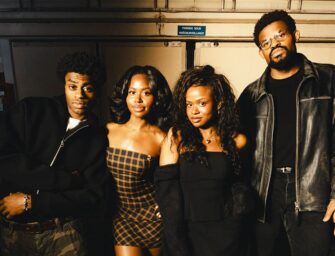Team-working and creative problem-solving specialist Rob Sheffield on managing the egos, agendas and personalities involved in a group songwriting session
There are many different definitions of creativity. It’s something a lot of people feel strongly about the process and identify with it personally, so I realise it’s not a simple, agreed term – people come at it from different directions. However, the definition that is used most widely, regardless of what work you do, is that it’s something to do with ‘generating novel and useful ideas’.
So whether you’re writing a song, a novel or a script for a television show, or even working in a business coming up with new products and services, the idea has to be something you haven’t done before. That could be incrementally novel – a clever tweak to what you’ve done previously – or something radical, but it’s not rocket science. We’re not talking about something new to the entire universe!
And the complementary side to creativity is that your new thing has to be ‘useful’ to somebody. What’s the point in producing something so wacky that nobody wants or appreciates it? So it’s got to bring some potential benefit or pleasure to people.
WHY ARE WE HERE?
The context that I’m working in is often very different to the situation many songwriters find themselves in, but there are some similarities. My starting point would always be: what are you trying to achieve? In the context of a commercial pop songwriting team, the desired outcome might be a hit song. In the corporate world, the aim might be to design some sort of commercially viable product or service, but – depending on what they are looking to achieve – I would think about getting the right mixture of people in the room. We would look for a diverse range of people who will be able to tackle the challenge from different angles and come up with an array of ideas. The ‘design’ of it depends on the complexity of the problem you’re trying to solve, but part of that would involve making sure you’ve got a good mix of styles. Especially if you’re looking to come up with something genuinely imaginative, it will help to have some diversity in there.
But then it can get harder to make the best of the situation; it depends whether the people know and trust each other. I think if there’s more diversity in the group, it can take a bit of effort to get everyone working for something in common. You have to make sure the whole team agrees a common goal that they all want, and that can take a bit of time before you can start to get the best out of each other.
NO PRESSURE
People are often under pressure to deliver, either in terms of time or the level of expectation. So it’s very easy to bypass the process of getting to know each other, building up a level of trust and taking the time to agree ‘what we’re actually trying to do here,’ and that’s when things can go pear-shaped. Also, if people start to feel that pressure, creativity can become stifled and it’s harder to recover.
Everything we know about the creative process – from the research and teaching around it – tells us that you’ve got to build in space for exploration and what’s called ‘divergent thinking’. It’s just about having the time to explore the different options and come up with loads and loads of possibilities – to follow your nose and trust your intuition. That just isn’t possible if you’re in a rush and it feels forced.
Throughout the process, there will be different stages where you have very open, divergent thoughts that produce a wide range of ideas, but then later on, there may be periods of narrowing things down to what sounds good. But those two stages are completely essential.
The physical space is important – having a focused, relaxed environment that avoids distraction – but in terms of the creative atmosphere, there are a number of factors that will help or hinder the process. Critically, the supportiveness of the ‘leader’ of the group can have an effect on the rest of the team. Whether anyone feels they’re being judged, rather than being given the freedom to explore any idea, can have a massive impact. Are you all allowed to take a risk and try something new?
THE ART OF THOUGHT
In 1926, an academic called Graham Wallas penned the book, The Art Of Thought, about the process of coming up with creative ideas, and he identified four stages: Preparation, Incubation, Illumination and Verification. Preparation is when you begin to understand the problem or challenge, then there’s a period of Incubation, when you let the unconscious mind take over, and Illumination when something comes to you, from what seems like nowhere. Wallas argued that the Illumination stage only happens when you’ve immersed yourself, but then taken a break from it – stepping away from the problem is the crucial moment when the idea can arrive. Finally, the Verification stage is really just checking the idea out with other people and asking them what they think. This process is often quoted and has led to a lot of research, but I’ve heard writers talk about going through very similar stages.
NEGATIVE CAPABILITY
Similarly, back in the 18th century, the English Romantic poet John Keats talked about the concept of ‘negative capability’ in reference to Shakespeare’s creativity, describing the moment when “man is capable of being in uncertainties, mysteries, doubts, without any irritable reaching after fact and reason.”
The idea being that, when they’re working on something we don’t understand, we need to have the capacity to not know the answer. Some people can be frustrated by that perceived lull in the process and strive too early for resolutions, but the more capacity you have for ‘not knowing’ then you’re more likely to come up with something brilliant.




































Related Articles